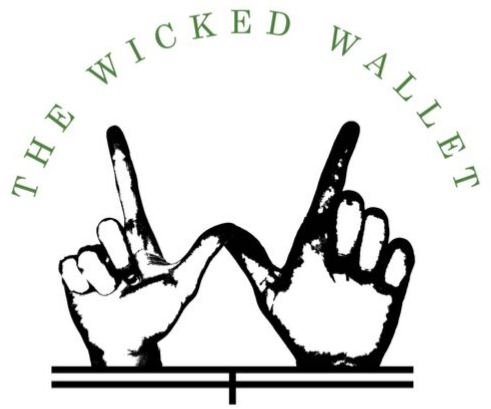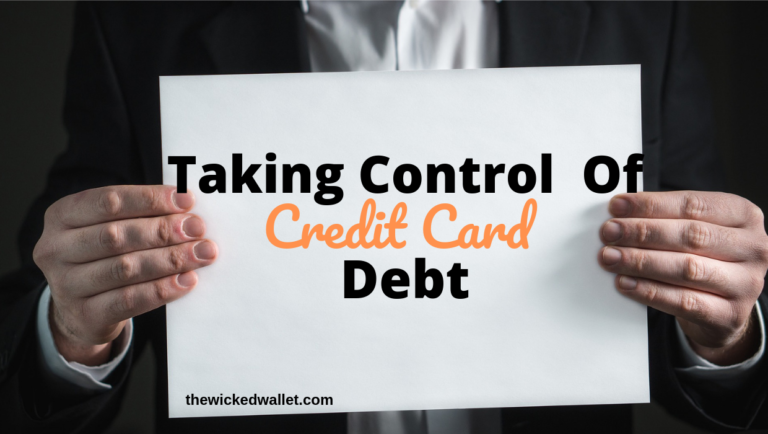One of many things that the average person in the U.S. has in common with other folks is credit card debt. Getting out of debt can feel impossible at times, especially without an effective strategy. Taking control of your credit card debt will liberate you and allow you to get one step closer to financial independence.
Did you know that in 2017 the Federal Reserve reported that the average U.S. citizen had $5,700 in credit card debt. Whether your current debt is above or below this average does not matter. The point is that the average person is in a bit of credit card debt. People fall into credit card debt for a number of reasons, but one of the primary reasons is that they do not understand the functions of a credit card.
When you apply for a credit card you get approved by a bank for a set monetary amount. As an example, let’s say that you have been approved for credit card with a limit of $10,000. That means that you have access to borrow funds from the bank up to $10,000. However, the bank needs to make money too so they charge you monthly interest on the funds you’ve borrowed. According to the federal reserve, in 2019 the average APR (annual percentage rate) was 15.09%. That means if you’ve maxed out your credit limit of $10,000 after one-month you would have accumulated $1,509 on interest debt as well. ($10,000*1.1509 = $11,509).
Let’s say after month one you plan to begin paying the minimum payment. According to thebalance.com the typical minimum debt payment percentage is between 2%-5%. For the sake of the example, let’s say your minimum payment is 2%. That means you would pay $230.18 towards your debt owed of $11,509, that means your total debt owed after the minimum payment would be $11,278.82. Now the bank charges you it’s monthly interest on your remaining balance. So, $11,278.82* 1.1509 = $12, 980.79.
As you can see credit card debt can become a vicious cycle that can seem inescapable. Below are some of the best strategies recommended by many that will help you escape this debt and take control of your finances.
Zero Balance Credit Card Transfer
I know what you’re probably thinking, “I already have so much credit card debt why would I open up another card.” That’s a great question to be asking, and the answer is in the interest rates or APR. Paying off large chunks of debt at the high interest rates of credit cards is a tough feat to conquer. A zero balance credit card is a card that allows you to transfer your debt to that account and they do not charge you interest for a set period of time. It’s important to shop around and choose the card with the longest 0% interest term.
During that time frame it’s important to go all out on your debt repayment. Reduce your overall credit card debt to the point that you no longer have any or it’s in a manageable position.
It’s worth noting that these credit cards typically require you to have a high credit score and typically won’t approve you otherwise. However, don’t give up just yet there are other ways to take control of this debt. Personal loans are a great alternative if you can not qualify for a zero balance card.
Personal Loan
Now I’m sure your asking yourself, “why would I pay off debt with more debt”. The answer to this question is the same as above and that’s interest rates.
Interest rates on a personal loan are typically a lot less than credit card rates. If your current credit card rate is 15% and you can get approved for a loan with an interest rate of 5% you will save a significant amount of money and be able to pay off your balance much faster.
Personal loans are a great alternative to zero balance credit cards because they allow you to reduce your interest rate and you don’t have to have a great credit score to get approval. Granted the higher the credit score you have the easier it will be to get approved. If you have a poor credit score, the bank may require you to have a cosigner for the loan or collateral to secure the loan.
A cosigner is an additional individual who signs for the loan who takes responsibility of the loan in a case of default, i.e if you stop paying your bills the bank can seek payment from the cosigner.
Collateral is something that has value that the bank will take from you and sell if you do not pay your debt. Collateral for a $10,000 personal loan could be something such as a car that is worth $10,000. If you don’t pay the bank will sell your vehicle and repay the loan that way.
While restructuring your debt is a wise decision, it may not always be possible. Regardless, when paying off your credit card debt you want to have a strategy.
Analyze Account Interest Rates
When first creating your strategy you want to know exactly where your credit card debt stands. Ask yourself the following questions: How many accounts do I have? What are the interest rates on all of those accounts? What are the balances of all my accounts?
Now here’s the fun part, you decide if you want to focus on paying off the accounts with the highest interest rate first or the account with the smallest balance first.
The one and only Dave Ramsey would recommend the snowball debt repayment plan. This plan starts with paying off the account with the highest interest rates first. The idea is that after you pay off the highest interest bearing account you will now have more cash to pay towards the next account and so on and so on. Thus, you get the effect of a snowball growing as you roll it down a hill. The high interest rates are your steep hill and the snowball is your cash flow. As you get closer to the lowest interest bearing account your cash flow will be much larger.
The latter strategy of paying off the credit card accounts with the lowest balance first is rationally less effective however it does provide the psychological boost of paying off debt and getting one step closer towards financial control. Although this emotional boost can not be monetized, it may be exactly what you needed to get focused on debt repayment.
It’s important to be true to yourself and understand what your goals are. This will help you choose a debt repayment strategy.
Last Resort
The absolute last resort when it comes to debt repayment and I mean the absolute last resort is filing for bankruptcy, also known as chapter 13. If you are approved after filing for bankruptcy the majority of your debt will be forgiven (It’s important to note that student loans will not be forgiven when filing for bankruptcy).
Although bankruptcy sounds all bad it is an opportunity for a second financial chance. This second chance doesn’t come for free either. Your credit score will be heavily impacted and this will stay on your report for 7-10 years. Having a bankruptcy on your record will appear as a big red flag to the majority of bank lenders and that may hinder your ability to receive further credit. Having a bankruptcy on your account can even affect your job search.
Filing for Bankruptcy may sound like the perfect way to get out of your credit card debt. Be sure to do your own diligence and see if the pros out-way the cons.
For more information on bankruptcy, check out this article here.
Final Thoughts
Credit card debt can be a scary thing and with the high APR your finances can spin out of control very quickly. The information above provides a few ways to take control of your debt. If you enjoyed this post and want to read more about credit card repayment strategies then leave us a comment or send us a message. As always I hope you enjoyed this post and please share with your friends and family.
Check out these posts to learn some other awesome saving strategies and tips!



